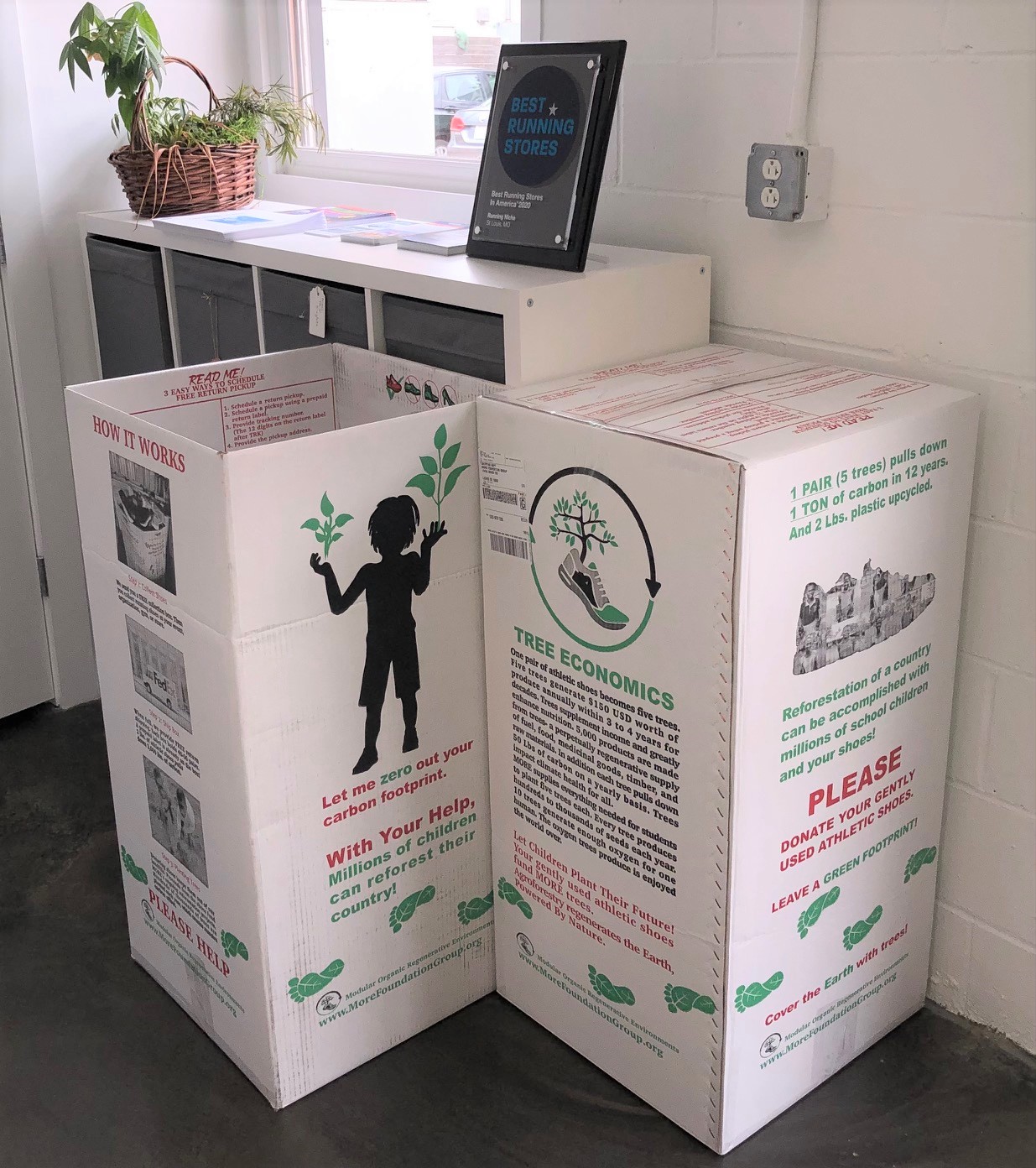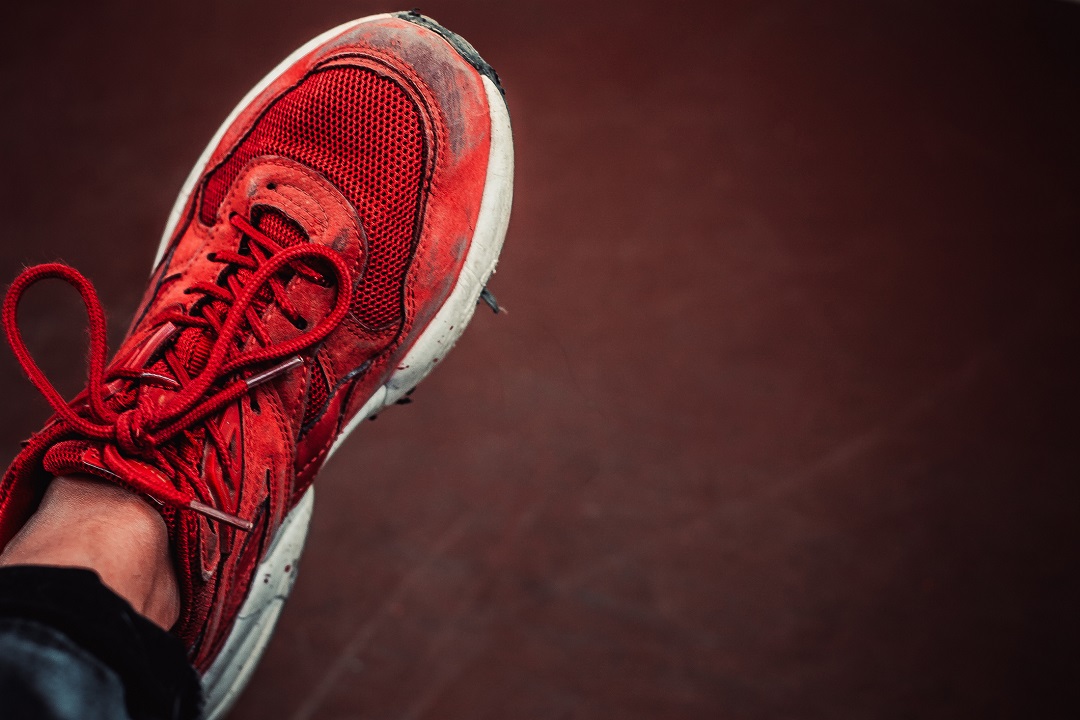A curious customer brought his well-loved running shoes to Bob Dyer’s Running Niche in St. Louis, wondering if it was (hoping it was not) time for a new pair. The shop owner asked how many miles he had run in them. The customer estimated 1,000.
When Dyer said he was overdue, hope gave way to despair. “People grow fond of their shoes and think they should last longer than they do,” Dyer said. “They’re expensive, and they’re revamped every year, but the upgrades correct stride issues or make them lighter — not more durable.”
Part of the reason for short shelf life is respect for Mother Earth, according to Erica Lindsay, marketing coordinator of Fleet Feet St. Louis. “Shoes are built to degrade over time to be more environmentally friendly,” she said. “So, even if a shoe is sitting on a shelf for a couple of years, it is breaking down.”
That’s the rub: Running in broken-down shoes increases stress and impact on muscles and joints, which can lead to overuse injuries. So, how do you know when it’s time to say goodbye?
Our experts have a few thoughts, but the first comes from Indiana Jones: “It’s not the years, honey. It’s the mileage.” Fleet Feet suggests new shoes every 350 to 500 miles. Running Niche maxes out at 450.
That range is based on:
- Running surface: Pavement (less stressful on running shoes) versus gravel (harder on shoes).
- Foot strike: The more force, the shorter the shoe life.
- Body weight: More weight = fewer miles until breakdown.
- Minimalist shoes or racing flats are made to last on the shorter end.
Lindsay suggests keeping track of miles with a running app, noting the day you change shoes and applying math skills. If you’ve lost track of the mileage, here are other signs.
A new blister, or achy feet, ankles, knees, hips, or back that appear out of nowhere. Lindsay says runners don’t always equate pain with old shoes. “If you feel a new ache the morning after a run,” she said, “that’s an indication your gait or stride is compensating for a worn-out shoe.”
Dyer says this is the No. 1 sign that customers report that leads him to suggest a new pair. “It happens like that,” he says, with a snap of his fingers. “And the pain won’t go away until you replace the shoes.”
Midsole mush. Made of foam, the midsole tends to break down faster than the outer sole, tread, or upper. Dyer uses the thumb test, compressing the midsole near the side of the heel.
“If I press my thumb into it and it has no spring and feels like a rock, it’s time for a new pair,” he said. “If it still has some spring, I’ll tell the customer to come back in a month. We rely on our customers trusting us, so I want to be honest with them.”
Uneven wear pattern around the outsole edges or heel. Excessive wear on the outside edges of your shoe may be a sign of supination: Your foot shifts outward with each step, placing the brunt of the impact on the outer bones of your foot. Excessive wear on the inside is a sign of pronation, causing more impact on the inner foot bones.
“The outer sole is the last line of defense,” Lindsay said. “If that’s worn down, the rest is worn down, too. Would you buy a new a tire when you’re unsure about uneven wear or just wait until the tire falls apart? You don’t want to injure yourself forcing a shoe to last. You want to protect yourself.”
Colorless insole. “If the logo or color has rubbed off the insole, it’s time for at least a new insole — or a new shoe,” Lindsay said.
Mangy uppers on trail shoes. Dyer says uppers sometimes wear out first on trail shoes because salt, sweat, and the dirt and dust along the trail break down the fibers.
The following tips also can help prevent injury and/or prolong shoe life:
- Strengthen leg abductor (outer thigh) and adductor (inner thigh) muscles. These can minimize pronation or supination and the wear on the outsole.
- Alternate shoes. For people who run 20 or more miles a week, Dyer recommends two pair, preferably from different brands and in different stages of their usable lives. “It doesn’t extend the mileage of a shoe,” he said, “but when you alternate, you’re using your foot muscles differently each day, minimizing the risk of injury.” Some runners keep a lighter-weight pair for short, speed runs and a heavier pair for long, slow runs.
- Remove shoes properly. Don’t just kick them off from the heels. Untie the laces and loosen them to prevent stretching.
- Store shoes in a cool, dry place. Heat accelerates breakdown.
- Wear running shoes only when you run, as opposed to when you run errands.
- Clean (or defunk) shoes. To remove that sweaty smell, Fleet Feet prefers using 2Toms StinkFree spray to the washing machine. Dyer is OK with the machine, though he suggests removing the insoles and washing the shoe with towels to balance the load. Avoid the dryer; the heat weakens the fibers, foam, and outer soles. Instead, air-dry shoes in the sun. Dyer also suggests stuffing newsprint into the toe box to absorb moisture.

Disposing of Your Shoes
Many running stores, including Running Niche, Fleet Feet, and Big River Running Company in St. Louis, will take your used athletic shoes, which they recycle or donate to charity. It’s always a good idea to call ahead to hear about any special conditions or considerations.


Leave A Comment